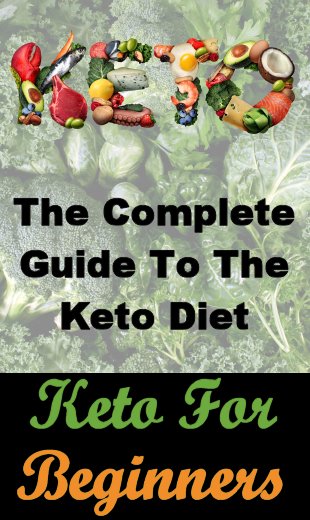17 Reasons To Consume Plenty Of Fibre, And A List Of Natural Sources
“Dietary fiber provides a whole slew of health benefits when consumed in adequate amounts. It not only promotes ‘regularity’, it also reduces your risk of several chronic diseases and plays a crucial role in successful weight loss.”
The above quote, by Harley Pasternak, summarizes very neatly why your diet should contain an adequate amount of fibre.
This article explains some of the many health benefits, and also lists foods that are high in fibre that you can easily add to your diet.
Benefits Of Fibre
- Healthier Long-Term Weight. Not only can eating fibre help you lose weight (see below), but it can also assist you in maintaining a leaner body over time, thus helping to prevent obesity.
- Longer Life. Harvard researchers found that your risk of dying from any cause was reduced by around 18% when consuming high-fibre foods, compared to those who had a low-fibre diet.
- May Maintain Bone Density. Some forms of soluble fibre can improve the bioavailability of minerals in the foods you eat. For example, if your body can more readily absorb magnesium, then that can help improve your bone health.
- Prevents Constipation. This is one of the most common gastrointestinal (GI) complaints in the USA today, and fibre can help prevent this because it softens your stools and helps you expel them more easily from your body.
- Promotes A Healthier Microbiome. When the bacteria in your intestines process fibre, they create short-chain fatty acids, which have been linked to a reduction in inflammation – and inflammation is associated with a host of chronic diseases and conditions. However, you need to eat plenty of fibre every day (or, at least, most days), to maintain this benefit – otherwise you can end up causing inflammation.
- Provides A Natural Detox. Fibre can help get rid of toxins from your GI tract. Even better, because insoluble fibre helps food move through your intestines faster, then any toxins you do ingest (e.g. chemicals such as BPA, mercury from fish, pesticides) are eliminated faster, giving them less time to cause harm.
- Reduced Risk Of Breast And Colorectal Cancers. This is what a study published in the Annals of Oncology concluded – every 10 grams of fibre you consume translates to a 5% reduction in breast cancer risk and a 10% reduction in colorectal cancer risk.
- Reduced Risk Of Diverticulitis. This is a GI disease that is one of many unwanted side-effects of inflammation, often seen in the elderly. Eating adequate amounts of fibre can reduce the risk of this painful condition by up to 40%.
- Reduced Risk Of Heart Disease. Studies have shown that fibre can help eliminate excess cholesterol from your bloodstream, which lowers your chance of heart disease.
- Reduced Risk Of Haemorrhoids. Because fibre helps create looser stools that are passed more easily, you won’t need to strain as much, which lessens your risk of developing piles.
- Reduced Risk Of Metabolic Syndrome. This includes problems such as hyperglycemia, hyperinsulinemia, hypertension, low HDL levels, and obesity.
- Reduced Risk Of Stones. There is some evidence that consuming fibre can lower the chances of you developing both gallstones and kidney stones.
- Reduced Risk Of Stroke. One study found that for every additional seven grams of fibre you consume, your risk of having a stroke decreases by 7%.
- Reduced Risk Of Type 2 Diabetes. Fibre can help stabilize blood sugar levels, thus lowering your risk of diabetes.
- Relief From IBS. There are some reports that fibre can reduce the pain from irritable bowel syndrome.
- Skin Health. Because fibre helps eliminate toxins from your body, that prevents them being excreted via your skin, thus reducing the risk of acne and various rashes.
- Weight Loss. Fibre is filling, but with few calories, which helps, but it also binds with fats and sugars in your intestines, thus reducing the number of calories you receive.
The Two Types Of Fibre
There are two different types of fibre:
- Soluble fibre, as its name suggests, dissolves in water to create a substance that is similar to a gel, which can help lower both blood cholesterol and glucose levels.
- Insoluble fibre actually absorbs water, and it is this that adds bulk to the food that passes through your digestive tract, thus contributing to the easy and speedy evacuation of your bowels.
As a rough guide, it is recommended that you consume three times more insoluble fibre than soluble fibre.
Natural Sources Of Soluble Fibre
- Beans and legumes (e.g. black beans, kidney beans, lentils, lima beans, peas)
- Fruit (e.g. apples, apricots, avocados, bananas, dates, figs, lemons, limes, grapefruits, guavas, nectarines, oranges, pears, quinces)
- Grains (e.g. amaranth, barley, oats)
- Nuts (e.g. almonds, brazil, hazelnuts)
- Seeds (e.g. chia seeds, flaxseeds, pumpkin, sunflower)
- Vegetables (e.g. asparagus, broccoli, Brussels sprouts, cabbage, carrots, cauliflower, chicory, onions, sweet potatoes, turnips)
Natural Sources Of Insoluble Fibre
- Beans and legumes (e.g. garbanzo beans, kidney beans, lentils, lima beans, peas, pinto beans)
- Fruits (e.g. apples, bananas, blackberries, blueberries, cranberries, grapefruits, oranges, raspberries, and strawberries)
- Grains (e.g. barley, brown rice, bulgar, couscous, oat bran, wheat bran)
- Leafy greens (e.g. kale, spinach, Swiss chard)
- Nuts (e.g. almonds, peanuts – especially the skins)
- Seeds (e.g. pumpkin, sunflower)
- Vegetables (e.g. carrots, celery, courgettes / zucchini, cucumbers)
How Much Fibre Do You Need?
According to the US Institute of Medicine (IOM), these are the recommended daily amounts of fibre you should be consuming:
- For men up to the age of 50, 38 grams (which is almost 1.5 ounces)
- For men who are 50 or older, 30 grams (which is just over 1 ounce)
- For women up to the age of 50, 25 grams (which is between three quarters of an ounce and one ounce)
- For women who are 50 or older, 21 grams (three quarters of an ounce)
- For women who are pregnant, 28 grams (which is almost one ounce)
- For women who are breastfeeding, 29 grams (which is just over one ounce)
Another recommendation is to eat 14 grams of fibre for each 1,000 calories you consume.
If you’re already counting calories, this option is relatively easy, but if you’re not, which would apply to most people, then it seems simple to stick with the IOM recommendations.
And lastly, it is better to obtain the majority of your fibre from fruit and vegetables, rather than from grains.
Conclusion
As you can see, fibre plays an important role in so many aspects of our health, and it’s not that difficult to obtain what you need from your diet.
And if you are really struggling to do that, then there are fibre supplements that can help, such as psyllium husk.
Additional Resources
These are suggestions for those who wish to delve deeper into any of the above:







